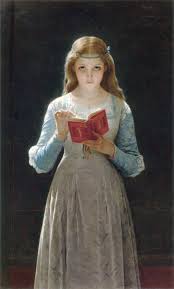Lattice Squares
Construction
The materials to create a lattice message were abundant amongst any army, though only a specialized few could create or read such messages. All one needed were four sturdy sticks and several lengths of string.
The Rag'jannob generally wove together string out of sinew, and the art was considered to be one of the most sophisticated rope making techniques of the time. Folktales and the stories of Rag'jannob descendants suggest that most Rag'jannob children learned the technique and utilized it during play. Sources suggest that a well made length of Rag'jannob rope 0.75" (1.905cm) thick would lift a fully grown man.
The Rag'jannob soldier creating the message would tie the four sticks into the shape of a square. This would be the foundation of any message. One corner would be marked with a bulbous knot, showing which end of the square was the top and which way the square should face when being 'read'. The strings, each length representing a single word or idea, would be tied in various configurations and shapes across the square. Once the message was completed, some soldiers would preserve the message by wrapping it in cloth, dipping it in honey, or burying it shallowly in a marked spot. These completed lattice squares would either be left behind to be found or sent directly to another squad in the area.
Interpretation
These square messages were designed to be read with the fingertips, uninhibited by darkness or submersion. Due to the limited vocabulary provided, enemy nations or islands were assigned codenames, usually a combination of two or more animal names and the word 'enemy'. In the case where such a codename appeared, any numbers would refer to the quantity of troops spotted by the messenger.
Location and direction were split into two groups: stationary and movement. Therefore, indicating that the enemy was stationed in the north was a very different word from moving north. A message may contain both types of location based information to communicate the troop's current location as well as their path. The speed of the troop's movement could also be stated via the names of certain bird species local to the Rag'jannob islands. Generally, these bird names would never be used to designate a particular enemy but, in cases where they were used, context would usually clear up any confusion.
Requests from other Rag'jannob squads would always include a particular design to specify it as such. Common requests would be for food, reinforcements, or information on enemy troop formations. Another common request would lead the allied squad to a hidden trove of personal effects left behind by deceased soldiers to be returned to their children.
Many lattice squares were destroyed after the message was fully received to prevent any enemy from acquiring the knowledge therein. It is unknown how often an enemy group would have any that could interpret lattice squares, or if they feared that the enemy would get their hands on enough of them to eventually break the code. It is also possible that this was religiously motivated as well, since the Rag'jannob people were known to worship Rayv'noosh, a god of secrets.
Cultural Significance and Folklore
As this is an early non-spoken language system of the Rag'jannob people, many have theorized that it is the basis for the writing system of the modern hoov language. While the Rag'jannob's lattices were based on shapes within a square, hoov is created with shapes laid over a basic cross. Other than creating a language around a simple shape, there is no proof that these lattice squares were an ancestor of hoov's written form. It is true, however, that many of the descendants of the Rag'jannob speak hoov today, so the connection is not impossible.
Currently, there are no persons who are fluent in lattice squares. Most of the language has been lost to time. Given the Rag'jannob people's penchant for secrecy, few intact artifacts left from their society have been found or studied.
One story that has survived the test of time speaks of a philosopher-soldier who created a lattice cube. According to legend, the cube could be interpreted from any direction and would tell a different story or reveal a different secret depending on how it was oriented. Due to the limited vocabulary and the flat nature of the system, this legend is most likely nothing more than a fanciful tale whose significance or lessons cannot be understand without the cultural context in which the story was told.
Remove these ads. Join the Worldbuilders Guild










This is such a cool idea! It's definitely unique to have a military code inspired from child's play with the squares. I also really like that the messages are coded in both form of the knots on the square and in content by using birds and animal names. Are there any remaining examples of the lattice squares? Has anyone recently been able to decipher or is trying to decipher them? I always enjoy reading about military forms of communication. Keep up the great work!